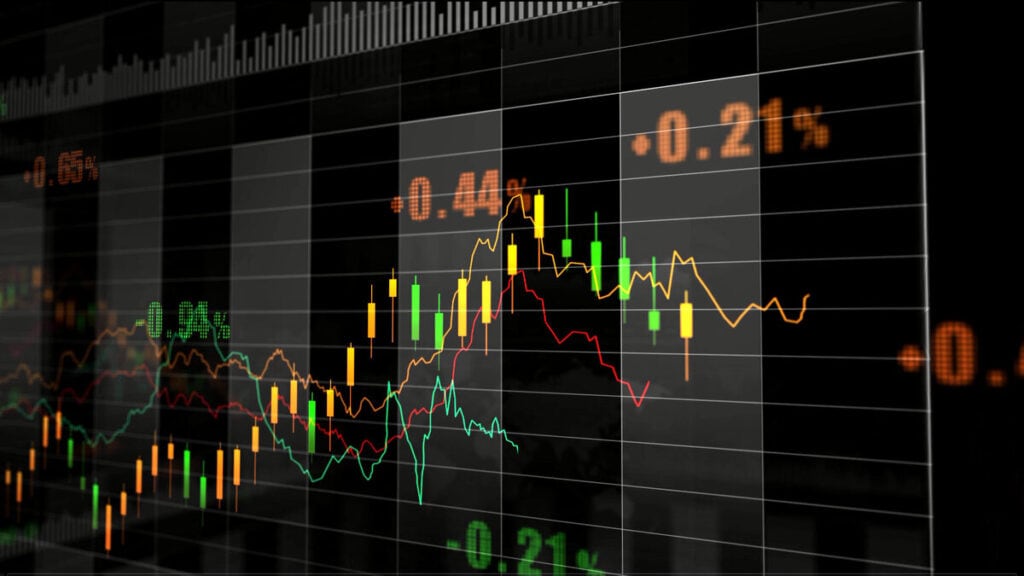Introduction to Risk Management Strategies
Learn the Basics
Forex trading offers exciting opportunities for investors to participate in the dynamic global currency market. However, it also involves inherent risks that can lead to significant losses if not managed effectively. This is where risk management strategies come into play, serving as a critical aspect of successful trading. Risk management is the process of identifying, assessing, and mitigating potential risks to protect capital and maximize returns. In this blog, we will explore the importance of risk management in forex trading, the significance of preserving capital and managing losses, and provide a comprehensive overview of the various risk management strategies that traders can employ to navigate the forex market with confidence.
A. Importance of Risk Management in Forex Trading
In the high-stakes world of forex trading, risk management takes center stage as the bedrock of a successful trading journey. Effective risk management is not simply an option; it is a necessity. The forex market is known for its volatility and unpredictability, with prices subject to rapid fluctuations influenced by various economic, geopolitical, and market factors. As traders navigate these complexities, they must be equipped with well-defined risk management strategies to safeguard their capital from substantial losses. By embracing sound risk management principles, traders can maintain a disciplined approach to trading, ensuring that they are well-positioned to withstand market fluctuations and seize profitable opportunities while minimizing potential downsides.
B. Significance of Preserving Capital and Managing Losses
Preserving capital is at the heart of risk management in forex trading. The old adage “preservation of capital is key” holds particularly true in this dynamic market. A single, significant loss can have devastating effects on a trading account, potentially wiping out a substantial portion of the capital. By focusing on capital preservation, traders aim to protect their trading accounts from unrecoverable losses and ensure they have sufficient resources to continue trading and capitalize on future opportunities. Effectively managing losses is an integral part of this process, as controlling downside risk allows traders to remain resilient during challenging market conditions and avoid catastrophic consequences.
C. Overview of What the Blog Will Cover
In this blog, we will delve into a comprehensive exploration of various risk management strategies tailored to forex trading. From understanding risk tolerance and setting trading objectives to implementing position sizing, stop-loss orders, and take-profit targets, we will provide practical insights to help traders protect their capital and optimize risk-reward ratios. Additionally, we will discuss the significance of diversification and asset correlations in risk management and explore the role of emotional discipline in making well-informed trading decisions. By the end of this blog, traders will be equipped with the knowledge and tools necessary to build a robust risk management framework, fostering confidence and competence in their forex trading endeavors.
Understanding Risk in Forex Trading
Understanding the concept of risk is fundamental for any forex trader. In this section, we will explore the key elements of risk in forex trading and how they can impact trading outcomes.

A. Volatility and Market Fluctuations
Forex markets are known for their inherent volatility, which refers to the rapid and unpredictable price movements observed in currency pairs. Volatility can create both opportunities and risks for traders. While it presents the potential for significant profits, it also exposes traders to the danger of sudden and adverse price swings. Understanding volatility is crucial for identifying optimal entry and exit points and implementing risk management strategies effectively.
B. Leverage and Its Impact on Risk
Leverage is a double-edged sword in forex trading. It allows traders to control larger positions with a smaller amount of capital, magnifying potential gains. However, increased leverage also escalates risk exposure. Excessive use of leverage can lead to substantial losses, especially when combined with volatile market conditions. Traders must strike a balance between leveraging their positions to optimize returns while ensuring prudent risk management practices.
C. The Role of Risk-Reward Ratio in Trading
The risk-reward ratio is a pivotal concept in risk management. It assesses the potential reward of a trade in relation to its risk. A positive risk-reward ratio means that the potential profit outweighs the potential loss, while a negative ratio indicates the opposite. Traders should aim for risk-reward ratios that align with their risk tolerance and trading objectives. An effective risk-reward ratio ensures that profitable trades outweigh losing ones, leading to overall positive returns in the long run.

Setting Risk Tolerance and Trading Objectives
Establishing a clear risk tolerance and defining trading objectives are essential steps in developing a well-structured risk management plan. In this section, we will explore how traders can tailor their risk management strategies to their individual preferences and trading goals.
A. Assessing Personal Risk Tolerance
Every trader has a unique risk tolerance level, influenced by factors such as financial circumstances, experience, and psychological disposition. Assessing one’s risk tolerance is crucial in determining the appropriate amount of capital to allocate per trade and the level of leverage to use. Traders must be honest with themselves about their ability to withstand market fluctuations and potential losses to build a sustainable trading approach.
B. Defining Short-term and Long-term Trading Goals
Setting clear trading objectives is a cornerstone of effective risk management. Traders should define both short-term and long-term goals, encompassing profit targets, timeframes, and performance benchmarks. By having well-defined objectives, traders can align their risk management strategies with their intended trading outcomes and maintain focus on achieving their desired results.
C. Aligning Risk Management with Trading Objectives
Risk management strategies should be aligned with trading objectives to strike a balance between ambition and risk aversion. Conservative traders may opt for tighter risk controls and smaller position sizes, while more aggressive traders may embrace higher levels of risk to pursue potentially larger profits. The key is to ensure that risk management practices are congruent with the trader’s trading style and risk appetite.
Common Risk Management Strategies
Effective risk management strategies form the backbone of a successful trading plan. In this section, we will explore some of the most common risk management techniques that traders employ to protect their capital and enhance trading performance.

A. Position Sizing and Calculating Trade Size
Position sizing is the process of determining the appropriate volume or lot size for a trade based on risk parameters. By calculating the position size relative to the stop-loss level, traders can control the amount of capital they are willing to risk on each trade. Proper position sizing ensures that no single trade has the potential to significantly impact the trading account.
B. Using Stop-Loss Orders Effectively
A stop-loss order is an essential risk management tool that enables traders to predetermine the maximum amount of loss they are willing to tolerate on a trade. Placing stop-loss orders at strategic levels, such as support or resistance levels, helps protect capital from excessive losses in case the market moves against the trade.
C. Implementing Take-Profit Targets
Take-profit targets are price levels at which traders aim to exit a profitable trade. By setting take-profit levels based on technical analysis or other factors, traders secure profits before market conditions potentially reverse. Combining take-profit targets with stop-loss orders ensures that trades are closed with a favorable risk-reward ratio.
D. Scaling In and Scaling Out of Positions
Scaling in and scaling out involve gradually entering or exiting positions rather than executing a full position all at once. Scaling in allows traders to build into a position gradually, which can be useful during periods of uncertainty or when awaiting confirmation of a trend. Conversely, scaling out enables traders to lock in profits incrementally as the trade progresses, reducing exposure to potential market reversals.
Incorporating these common risk management strategies into a trading plan empowers traders to mitigate potential losses and optimize risk-adjusted returns. By mastering the art of risk management,
traders can navigate the forex market with confidence and discipline, setting themselves up for long-term success.

Diversification and Asset Correlations
Diversification is a powerful risk management technique that involves spreading investments across different assets to reduce overall risk. In this section, we will explore the benefits of diversification, the correlation between forex pairs and other assets, and how to strategically allocate a portfolio to mitigate risk effectively.
A. Understanding the Benefits of Diversification
Diversification is often touted as the “golden rule” of investing, and for a good reason. By diversifying a portfolio across various assets, sectors, and geographical regions, traders can minimize the impact of negative events on their overall investments. Different assets may react differently to market conditions, making a diversified portfolio less vulnerable to significant losses associated with a single asset class. The goal is to strike a balance between risk and potential returns by allocating investments across different, uncorrelated assets.
B. Correlation Between Forex Pairs and Other Assets
Understanding correlations between forex pairs and other asset classes is a crucial aspect of portfolio diversification. Some currency pairs may have significant correlations with commodities, equity markets, or interest rates. Traders should be aware of these relationships to ensure that diversification efforts genuinely reduce risk. By incorporating negatively correlated assets, traders can further enhance the risk-reducing benefits of diversification.
C. Portfolio Allocation for Risk Mitigation
Strategic portfolio allocation involves determining the optimal distribution of assets based on risk tolerance and investment objectives. Depending on individual risk profiles, traders may opt for more conservative or aggressive allocations. Balancing high-risk, high-reward assets with more stable, low-volatility options can help achieve a well-rounded portfolio that can weather various market conditions. Regularly rebalancing the portfolio ensures that the intended risk exposure is maintained over time.
Risk-Adjusted Returns and Reward-to-Risk Ratios
Evaluating risk-adjusted returns is essential for understanding the true performance of a trading strategy. In this section, we will explore methods for assessing risk-adjusted performance and how to use reward-to-risk ratios to make informed trade assessments.

A. Evaluating Risk-Adjusted Performance
Risk-adjusted returns factor in the level of risk taken to achieve returns, offering a more comprehensive view of a strategy’s success. Metrics such as the Sharpe ratio or the Sortino ratio can help traders evaluate how efficiently their investments generate returns relative to the risks they assume. Higher risk-adjusted returns indicate that the strategy has generated more significant returns per unit of risk taken.
B. Using Reward-to-Risk Ratios for Trade Assessments
Reward-to-risk ratios play a crucial role in individual trade assessments. By comparing the potential reward to the amount of risk taken on a trade, traders can make more informed decisions about whether a trade aligns with their risk management goals. Favorable reward-to-risk ratios indicate that the potential reward is greater than the risk, making the trade more appealing from a risk management perspective.
C. Balancing Potential Returns with Risk Exposure
Striking a balance between potential returns and risk exposure is a key consideration in risk management. While higher-risk opportunities may offer the allure of significant profits, they also carry greater downsides. Conversely, low-risk opportunities may have more modest rewards. Traders should evaluate potential trades based on their risk appetite and trading objectives, ensuring that the risk taken aligns with the potential rewards.

The Role of Emotional Discipline in Risk Management
Emotions can be a trader’s greatest foe when it comes to effective risk management. In this section, we will explore how to overcome emotional biases in trading, avoid revenge trading, and maintain discipline during drawdowns.
A. Overcoming Emotional Biases in Trading
Emotional biases, such as fear, greed, and overconfidence, can cloud judgment and lead to irrational decision-making. Traders must recognize these biases and work to overcome them by adhering to a well-defined trading plan and risk management strategy. Keeping emotions in check ensures that trading decisions are based on logic and analysis rather than impulsive reactions.
B. Avoiding Revenge Trading and Impulsive Decisions
Revenge trading, a response to a prior loss or missed opportunity, can lead to further losses and increased risk exposure. Traders should avoid making impulsive decisions driven by the desire to recover losses quickly. Instead, focus on adhering to the risk management plan and maintaining discipline even during challenging times.
C. Maintaining Trading Discipline During Drawdowns
Drawdowns, periods of losses in trading, are an inherent part of forex trading. Maintaining discipline during drawdowns is crucial to avoid deviating from the risk management plan and potentially increasing risk to recoup losses. By accepting drawdowns as a natural part of trading and sticking to the risk management strategy, traders can preserve their capital and stay on track for long-term success.
By understanding the role of emotional discipline in risk management, traders can safeguard their trading capital and maintain a stable and focused approach to trading, enhancing the overall effectiveness of their risk management strategies.
Incorporating Risk Management into Trading Strategies
Integrating risk management into trading strategies is essential for fostering a comprehensive approach to forex trading. In this section, we will explore how risk management can be seamlessly incorporated into different aspects of trading strategies.

A. Integrating Risk Management with Technical Analysis
Technical analysis and risk management go hand in hand when making trading decisions. By using technical indicators to identify entry and exit points, traders can also determine appropriate stop-loss levels and calculate position sizes based on risk tolerance. Integrating risk management with technical analysis ensures that traders are well-prepared to handle potential losses and protect their capital during volatile market conditions.
B. Considering Risk Factors in Fundamental Analysis
Fundamental analysis involves assessing economic, political, and geopolitical factors that can impact currency movements. By considering risk factors during fundamental analysis, traders can evaluate potential market risks and make informed decisions based on their risk management strategies. Recognizing how fundamental events can affect the market allows traders to implement appropriate risk mitigation measures.
C. Adapting Risk Management to Different Trading Styles
Different trading styles, such as scalping, day trading, swing trading, and position trading, have varying risk profiles. Traders should adapt their risk management strategies to align with their chosen trading style. For example, scalpers may employ tight stop-loss orders to limit exposure during rapid price movements, while position traders may use wider stop-loss levels to accommodate broader market fluctuations.

Risk Management Tools and Resources
In this section, we will explore various risk management tools and resources that traders can utilize to enhance their risk management practices.
A. Utilizing Trailing Stops and Breakeven Stops
Trailing stops and breakeven stops are advanced order types that can assist traders in managing risk dynamically. Trailing stops automatically adjust to lock in profits as the market moves in favor of the trade, while breakeven stops move the stop-loss level to the entry price once a specified profit target is reached, effectively making the trade risk-free. These tools allow traders to secure profits and minimize potential losses as market conditions change.
B. Exploring Risk Management Software and Calculators
Risk management software and calculators are valuable resources that aid traders in quantifying risk and optimizing position sizes. These tools help traders determine the appropriate lot size based on account equity, risk tolerance, and stop-loss levels. By utilizing risk management software and calculators, traders can ensure that each trade adheres to their risk management plan.
C. Accessing Risk-Related Educational Materials
Continuing education is essential in forex trading, especially in the realm of risk management. Traders should access risk-related educational materials, including articles, webinars, and books, to deepen their understanding of risk management principles and explore new strategies. Staying informed about the latest risk management techniques empowers traders to continuously improve their trading practices.
Conclusion
In conclusion, effective risk management is the cornerstone of successful forex trading. Throughout this blog post, we have explored the key principles and strategies to safeguard trading capital and enhance risk-adjusted returns. As a recap, we emphasized the importance of understanding risk in forex trading, setting risk tolerance and trading objectives, and implementing common risk management techniques like position sizing, stop-loss orders, and take-profit targets.

A. Recap of the Key Principles of Risk Management in Forex Trading
The key principles of risk management include assessing personal risk tolerance, diversifying investments, evaluating risk-adjusted returns, and maintaining emotional discipline. Traders must understand that risk is inherent in trading and that the goal of risk management is not to eliminate risk entirely but to manage it prudently to achieve consistent profitability.
B. Encouragement to Implement Effective Risk Management Strategies
We encourage traders to prioritize risk management as a fundamental aspect of their trading strategies. By integrating risk management into every aspect of trading, from technical and fundamental analysis to portfolio allocation and trading styles, traders can protect their capital and minimize potential losses.
C. Emphasizing the Importance of Continuous Improvement and Learning
Lastly, we emphasize the importance of continuous improvement and learning in forex trading. The markets are dynamic and ever-changing, and traders must stay abreast of new risk management techniques, market developments, and trading strategies. By continuously educating themselves and seeking out valuable resources, traders can enhance their risk management practices and adapt to evolving market conditions.
In conclusion, mastering risk management is an ongoing journey for every forex trader. By adhering to sound risk management principles, implementing effective strategies, and embracing continuous learning, traders can build a solid foundation for success in the challenging and rewarding world of forex trading. Remember, disciplined risk management is the key to longevity and profitability in the forex market.
